Happy Birthday Paul Cuffe!
Today, January 17, 2020 is Paul Cuffe’s 261st birthday.
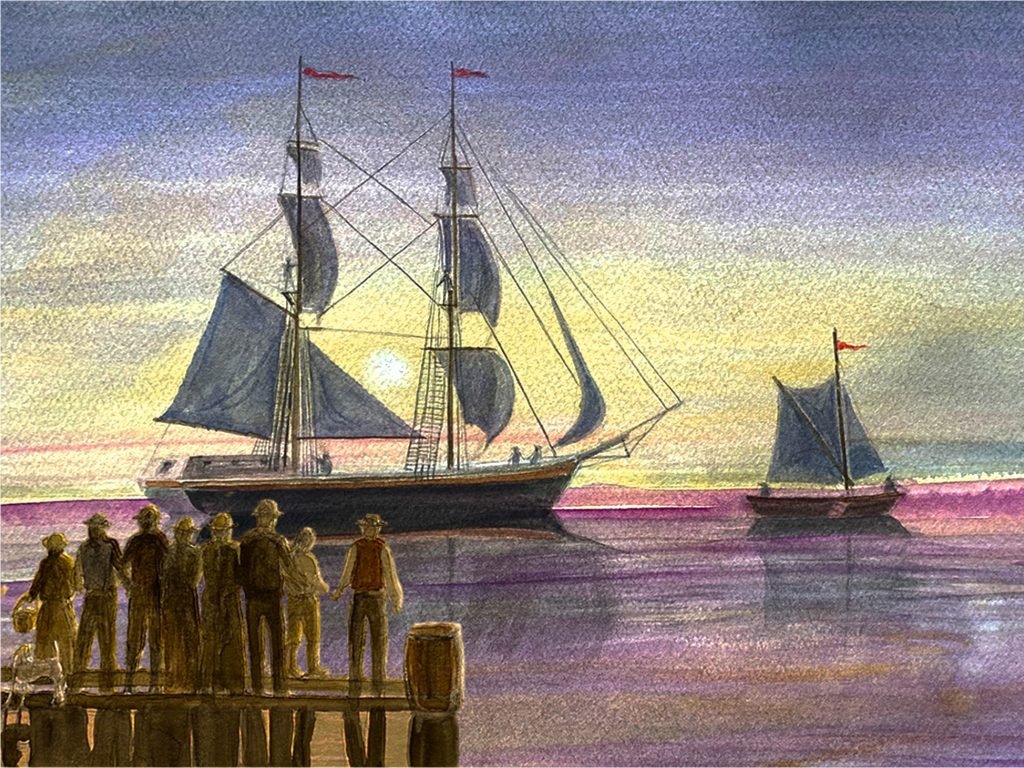
Paul Cuffe and Traveller passing Westport Point on 2nd trip to Sierra Leone, 1815
(Text written by David Cole and artwork copyright Ray Shaw)
Why is Paul Cuffe so important to the people of Westport and the World?
- Born on Cuttyhunk to an African father and Native American mother.
- Lived in Westport most of his life.
- Became a very successful sea captain, shipbuilder and businessman.
- Built the first school in Westport open to all children regardless of color.
- Oversaw building of Friends Meeting House in Westport.
- Supported equal rights for all persons.
- Sought to abolish slavery and the slave trade.
- Sought to improve the lives of the people of Africa.
- Helped his friends and neighbors who were facing hard times.
- Was honored and praised around the world when he died.
- More than 10 books have been written about him.
Who were Paul Cuffe’s parents?
His father, Cuff Slocum, was born in West Africa about 1717. He was captured and brought on a slave ship to Newport, Rhode Island in 1728 when he was only 11 years. He was bought by Ebenezer Slocum, a wealthy farmer in Dartmouth.
His mother, Ruth Moses, was a Native American, born in Harwich on Cape Cod.
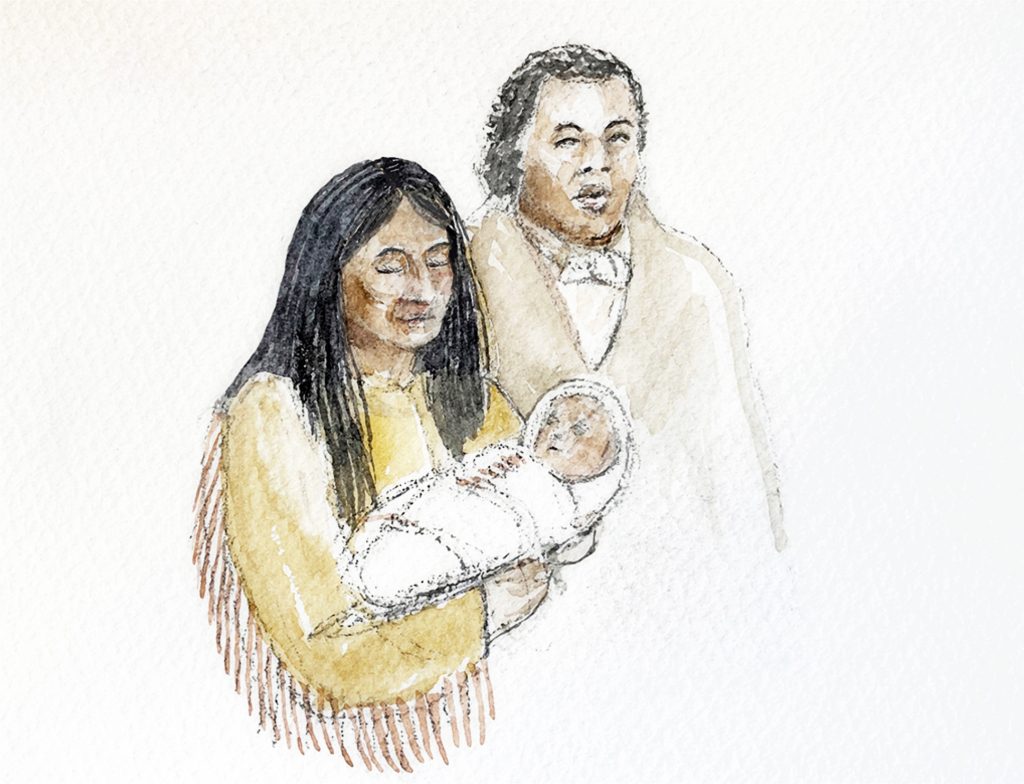
Paul’s mother Ruth Moses from Harwich married Cuff Slocum
The map shows the towns of Newport, Harwich and Dartmouth. Cuff Slocum was sold by Ebenezer Slocum to his nephew, John Slocum, in 1742. He worked for John Slocum for three years until he had earned his freedom in 1745. He married Ruth Moses in 1747

Map of Southeastern Massachusetts
Showing places important to Paul Cuffe’s life
Around 1750 Cuff and Ruth and their first two children moved to Cuttyhunk. Their work was to take care of sheep brought to the islands by Dartmouth farmers. Paul Cuffe was born on Cuttyhunk on January 17th, 1759, a cold and windy time of the year on the islands.
Paul was the 7th of 10 children, 4 boys and 6 girls. The children were healthy and lived to be adults. They were fortunate because many children died of disease in those times.
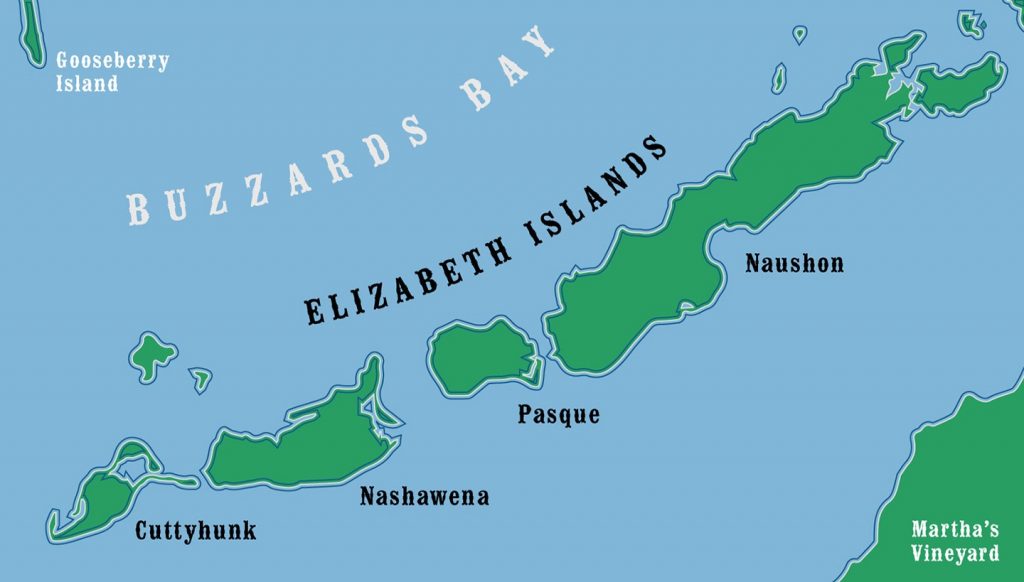
Paul and his family lived in a small house that his father had built near the waterfront in Cuttyhunk. There was a dock near the house. People travelled by boats among the islands as did Paul and his family. They fished and ate shellfish like clams and scallops.
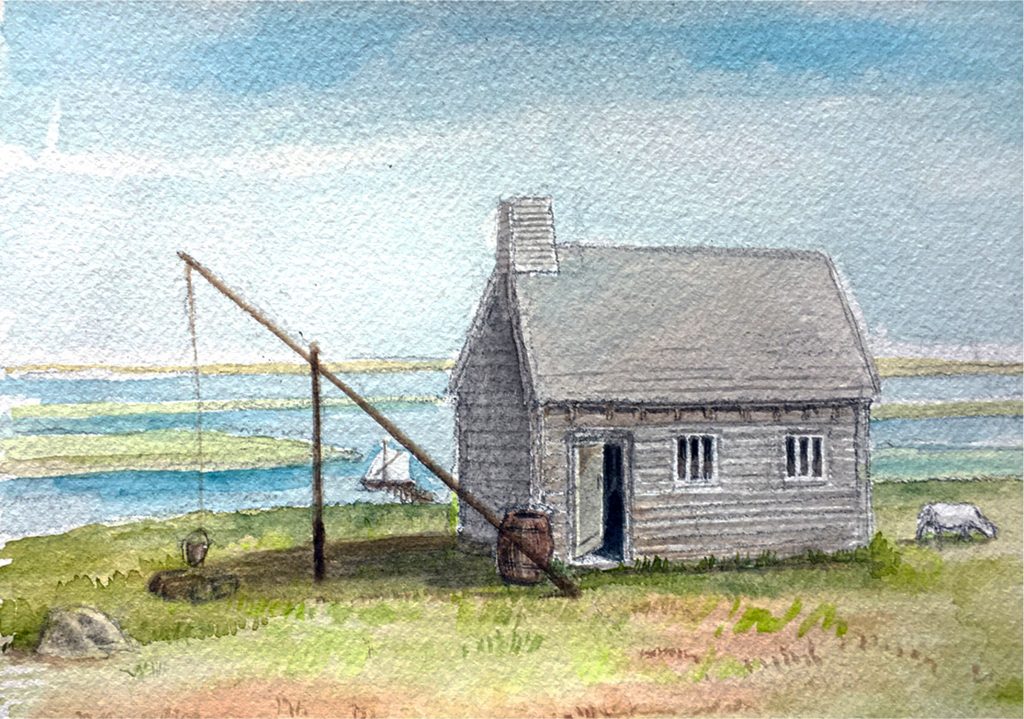
Cuff Slocum’s home on Cuttyhunk overlooking the harbor
Every spring Holder Slocum and other farmers brought boatloads of sheep out to the islands where they grazed for about 6 months. They were returned to the mainland in the fall. Paul’s father and older bothers took care of the sheep. When Paul was old enough, he helped them.
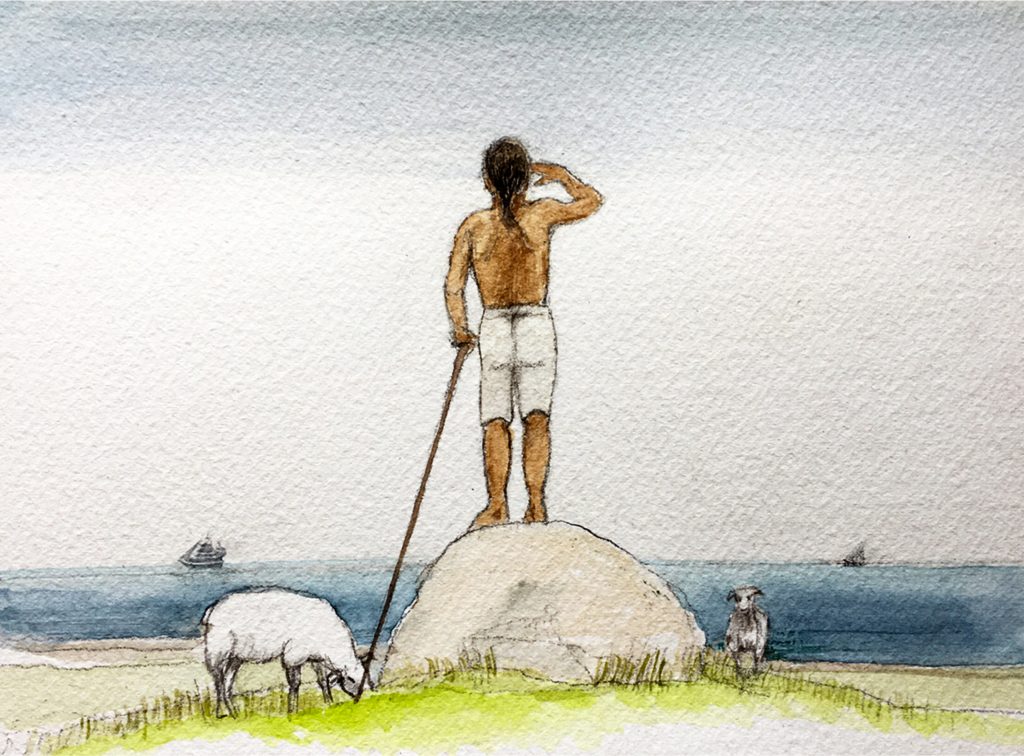
Paul Cuffe as a boy on Cuttyhunk tending sheep and watching passing ships
The boats used for bringing the sheep to the islands were small sailboats called shallops. Paul got his first lessons on sailing in this type of boat when he was only 7 to 8 years old.
There was no school on Cuttyhunk. Paul’s mother probably had some education and taught her children the basics of reading and writing, but Paul later mastered these skills on his own.
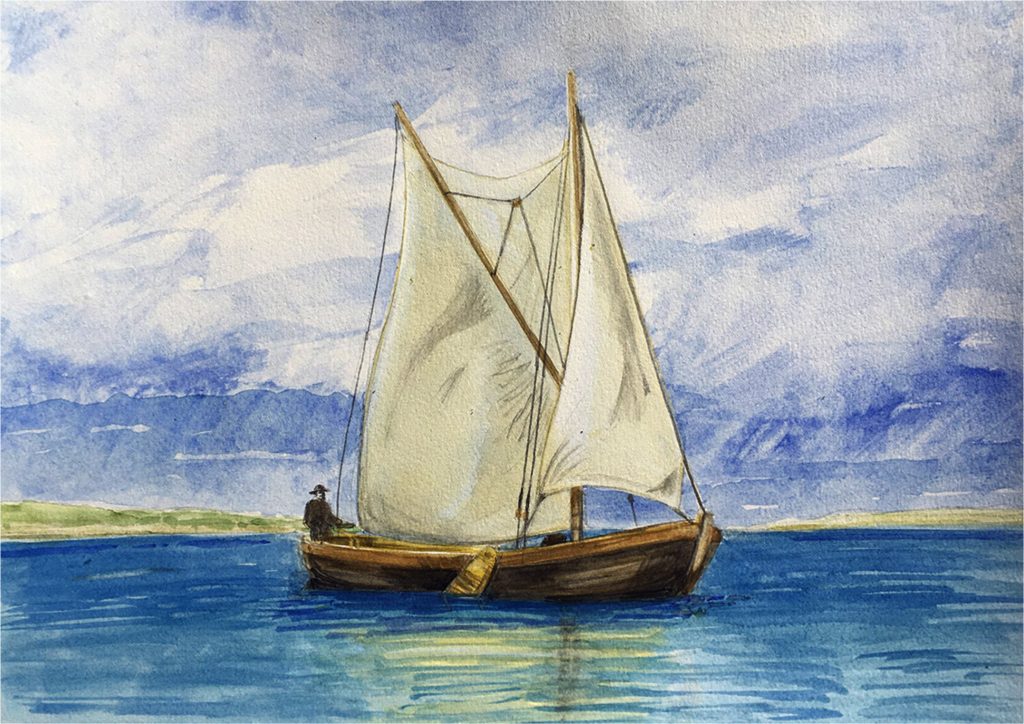
A Shallop – Popular sailing boat in early New England
In the spring of 1767, Paul and his family moved from Cuttyhunk to a large farm in Westport that his parents had purchased. The farm was located on what is now called “Old County Road” near the corner of Fisher Road in Westport.
There was a house and barns on the farm and an apple orchard. Their farm and orchard were near what is now Dartmouth Orchards.
Paul’s father died in 1772, only 5 years after the family bought the farm. Paul and his older brother, John, inherited the farm.
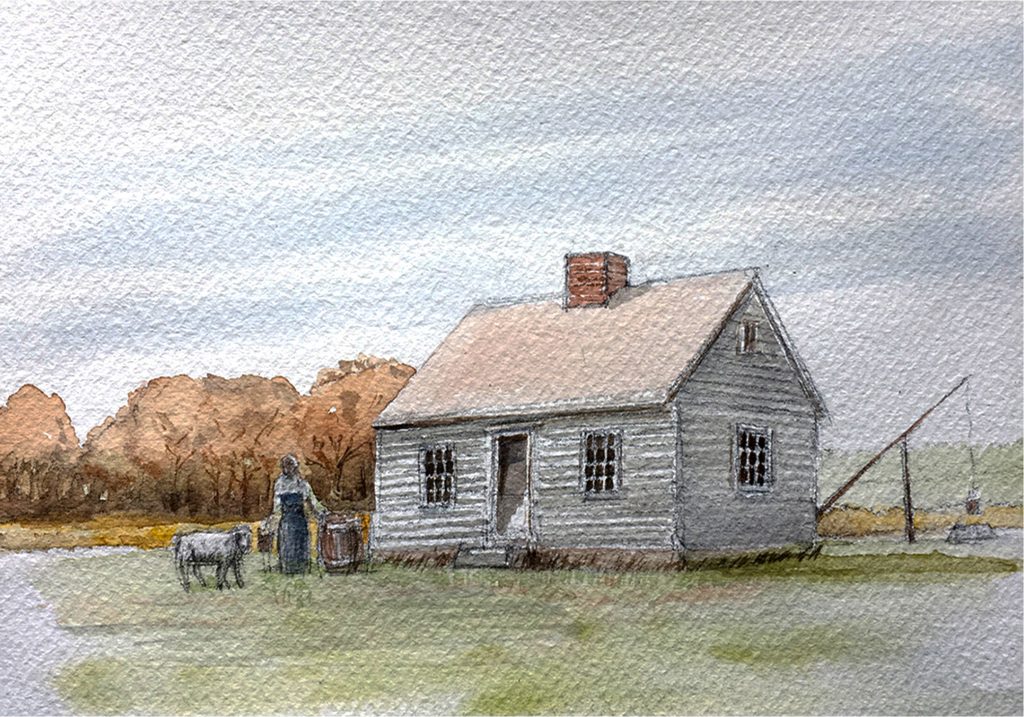
The Cuff Slocum home on their farm in Westport on Old County Road
When he was only 14 years old, Paul signed on as a crew member on a whaling ship that sailed to the West Indies to hunt for whales. Two years later in 1775, he crewed on another whaling trip to the West Indies.
On these whaling trips, Paul learned how to navigate – to locate where the ship was and chart a course to a destination.
On a third whaling voyage, in 1776, after the Revolutionary War against the British had started, their ship was captured by the British Navy and taken to New York.
Paul and his shipmates were held captive on a British prison ship in Brooklyn for three months.

Paul goes whaling
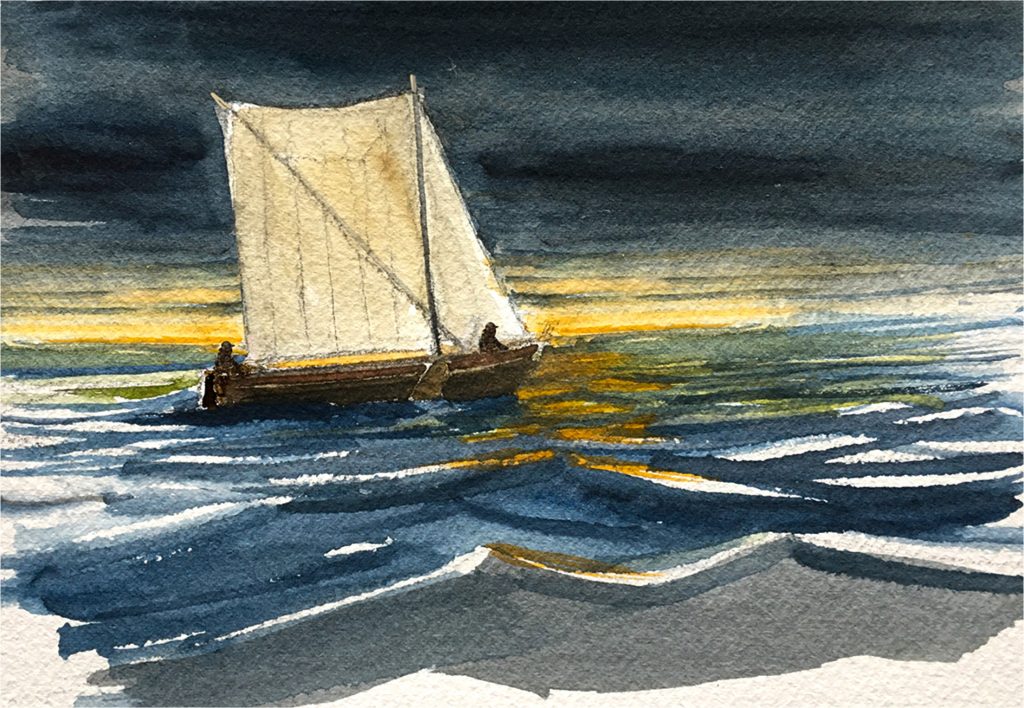
Paul Cuffe and friend nearing Nantucket at dawn
Paul learned from his shipmates that the British were blockading Nantucket. There were serious shortages of important goods on the island. Paul decided to see whether he could help the people of Nantucket.
He probably borrowed a shallop from the Slocum family and used it to transport much needed goods to NantucketHe sailed from Dartmouth to Nantucket on moonless nights, passing through the Elizabeth Islands and around Martha’s Vineyard to reach his goal.
Paul was stopped by pirate ships two times and they stole all his cargo. One time they even took his boat.
Nevertheless, he persisted and kept delivering supplies to Nantucket until the War and the blockade ended in 1783.
He established strong relationships with some of the wealthy merchant and whaling families on Nantucket, especially with the Rotch family who later moved to New Bedford.
William Rotch Jr. was the same age as Paul Cuffe and they became lifelong close friends and business partners.
In 1780, during the Revolutionary War, Paul and his brother John were required to pay taxes on their farm property.
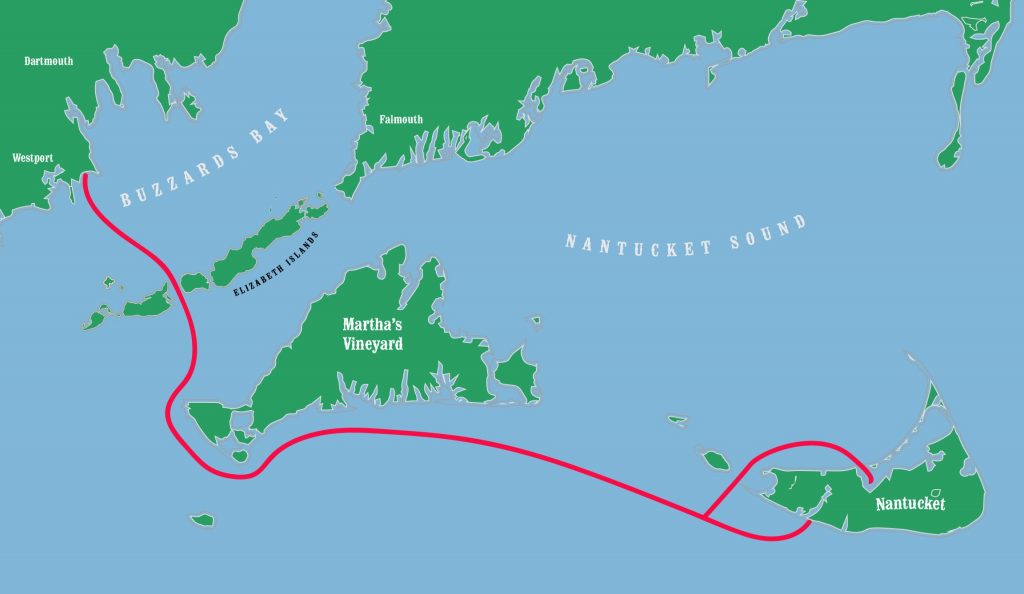
Probable route of Paul Cuffe sailing from Dartmouth to Nantucket
But because they were persons of color – African American and Native American – they were not permitted to vote in local elections.
Paul and John decided that this was wrong – it was “taxation without representation” – a fundamental reason why the American colonies were fighting the war against England.
They joined several other persons of color to file petitions with both the Massachusetts Legislature and the Town of Dartmouth to relieve them of the tax burden or grant them the right to vote.Their requests were not granted at that time. But when Massachusetts adopted a new constitution in 1783, it granted the right to vote to all male adults.
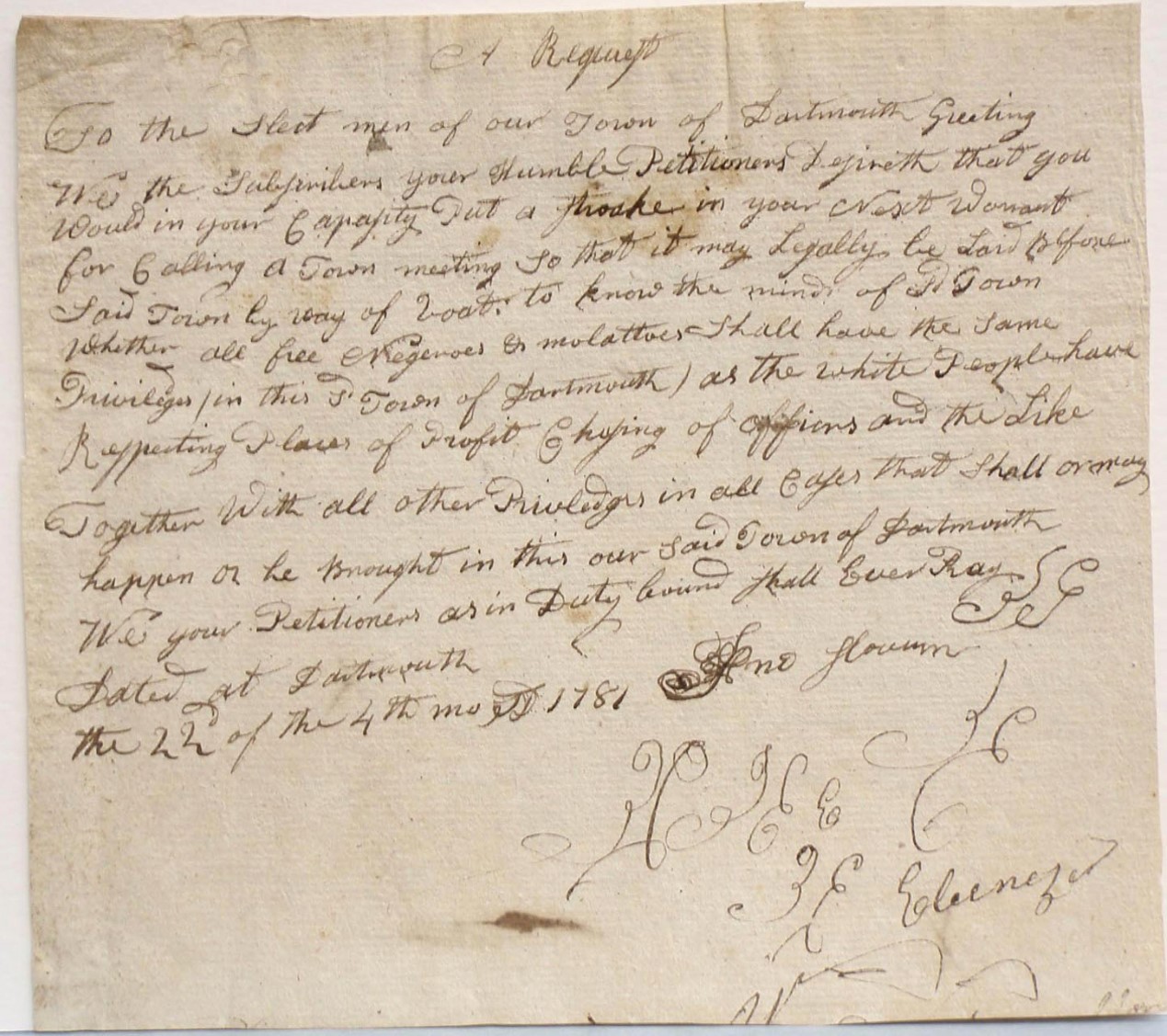
After the war ended in 1783, Paul set out in 2 new directions:
He married Alice Abel Pequit, a Wampanoag woman like his mother. They lived a few years in a wetu along Destruction Brook in Dartmouth. They had 7 children.
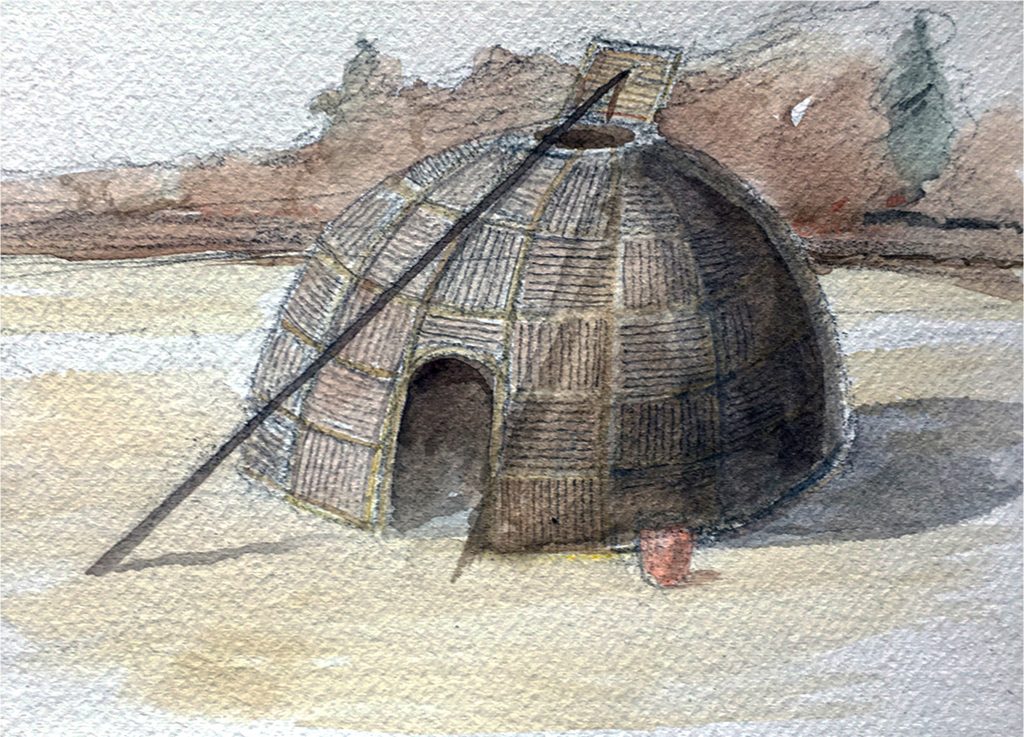
Image of a Wetu in which Paul and Alice Cuffe probably lived when they were first married
Michael Wainer, a Wampanoag, first known as Mikah Quabben, married Mary, Paul’s older sister.
Paul and Michael became partners in a merchant shipping business and later shipbuilding. Their business was very successful, and they became prosperous.
Captain Wainer and 5 of his sons were the officers and crews on voyages along the New England Coast, to the southern states, the Azores and even to Europe.
They also hunted whales in the North Atlantic and off the coast of Africa.
In 1789, Paul Cuffe bought a small property on the western side of the Westport River – known as the Acoaxet River at that time.
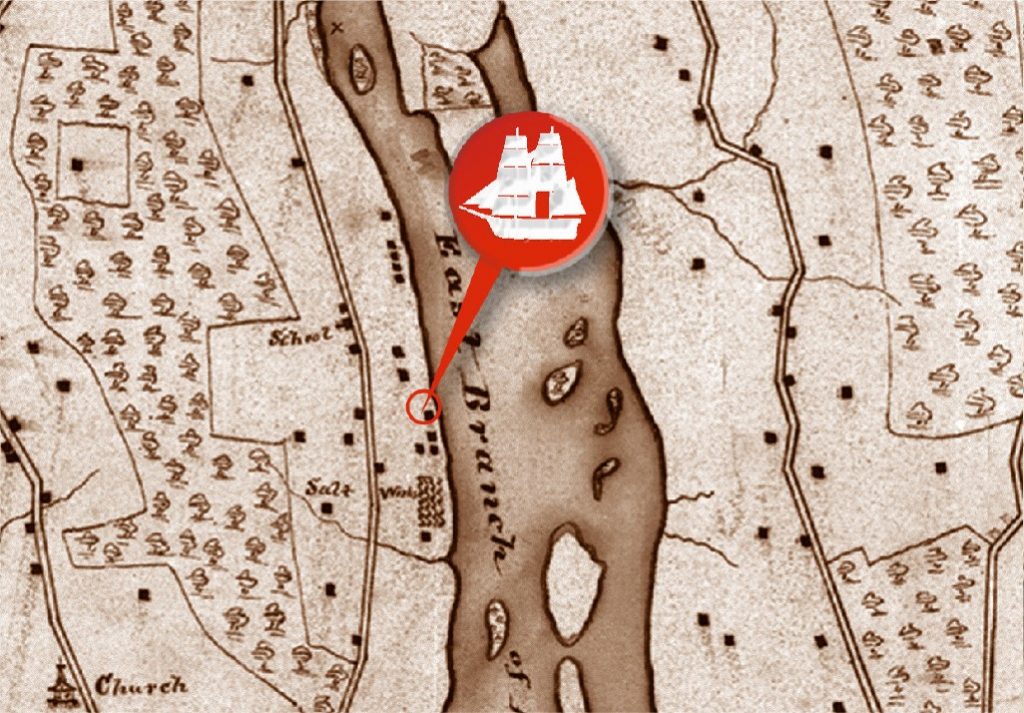
Cuffe’s wharf and shipyard
There he put in a wharf and buildings for his shipbuilding business.
A few years later he also built a house for his family that was one of the most valuable houses in Westport at that time.
Over a period of 18 years he built 5 ships at this site. The last one was a brig named Traveller. It was his favorite ship. He sailed it across the Atlantic Ocean to Europe and Africa numerous times.
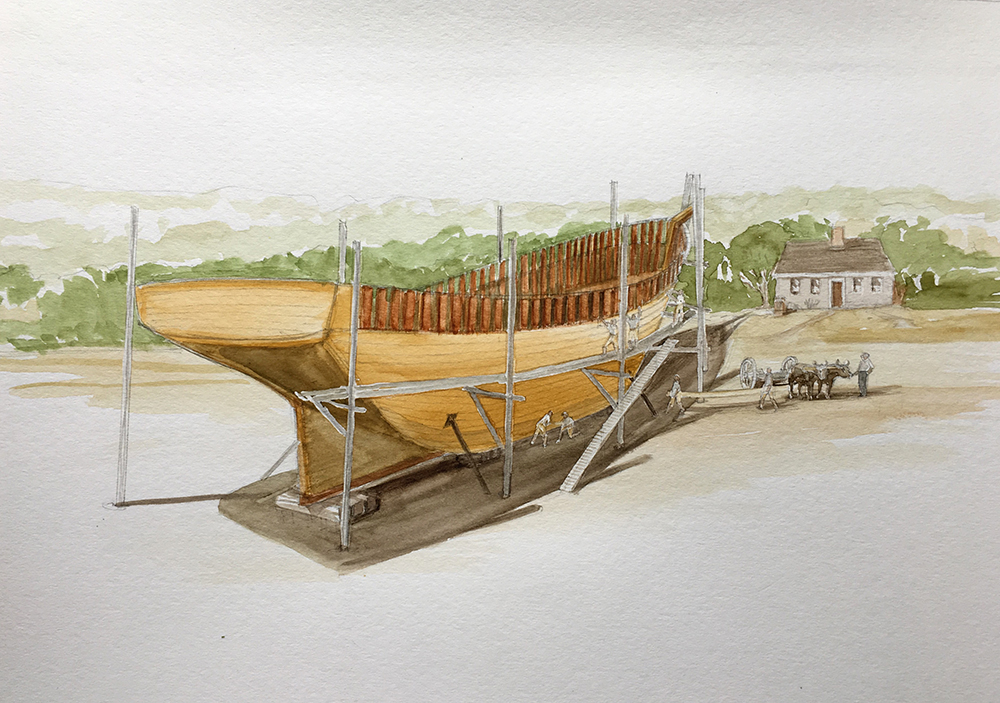
Building the Traveller, painting by Ray Shaw
In about 1797 he set up a school on Drift Road for boys and girls, white children and children of color. It is considered to be the first integrated school in the country. He did many other good deeds in Westport.
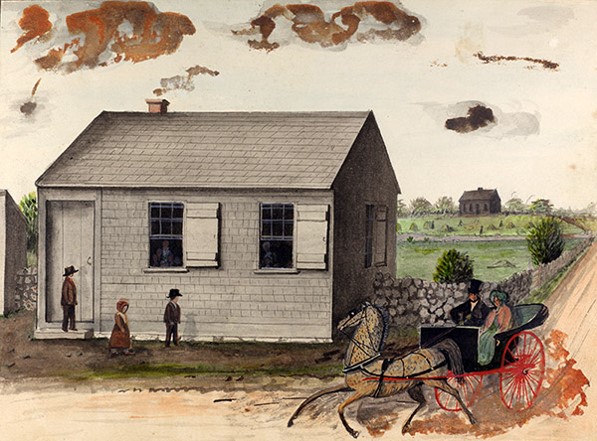
An early Westport schoolhouse like the one that Paul Cuffe built. Image courtesy New Bedford Whaling Museum.
Paul Cuffe became a member of the Westport Friends (Quaker) Meeting in 1808.
In 1813 he was asked to join a committee to build a new Meeting House for the Westport Meeting. He became the project’s driving force and contributed half the cost of construction of the new Meeting House. The Meeting House in Central Village is still in use today on Main Road in Westport.

Westport Friends Meeting House and monument to Paul Cuffe
Paul also opened a store in New Bedford with his sons-in-law, Alexander and Peter Howard. It sold goods from the West Indies that were brought to New Bedford on his vessels.
The store was where the Captain Paul Cuffe Park is now located. It is part of the New Bedford Whaling Museum. There is now an exhibit in the Whaling Museum about Paul Cuffe.
You might ask your parents to take you to see the Park and exhibit.
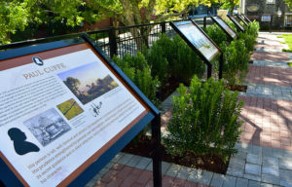
Captain Paul Cuffe Park at the New Bedford Whaling Museum
In the final decade of his life, Paul Cuffe became very involved in the quest for abolition of slavery in the world. Seeing himself as a descendant of Africa, he wanted to help the people of Africa to improve their lives.
He believed that the best way to do this and do away with slavery was to help the people become more productive. They should learn to produce goods for export to the rest of the world.
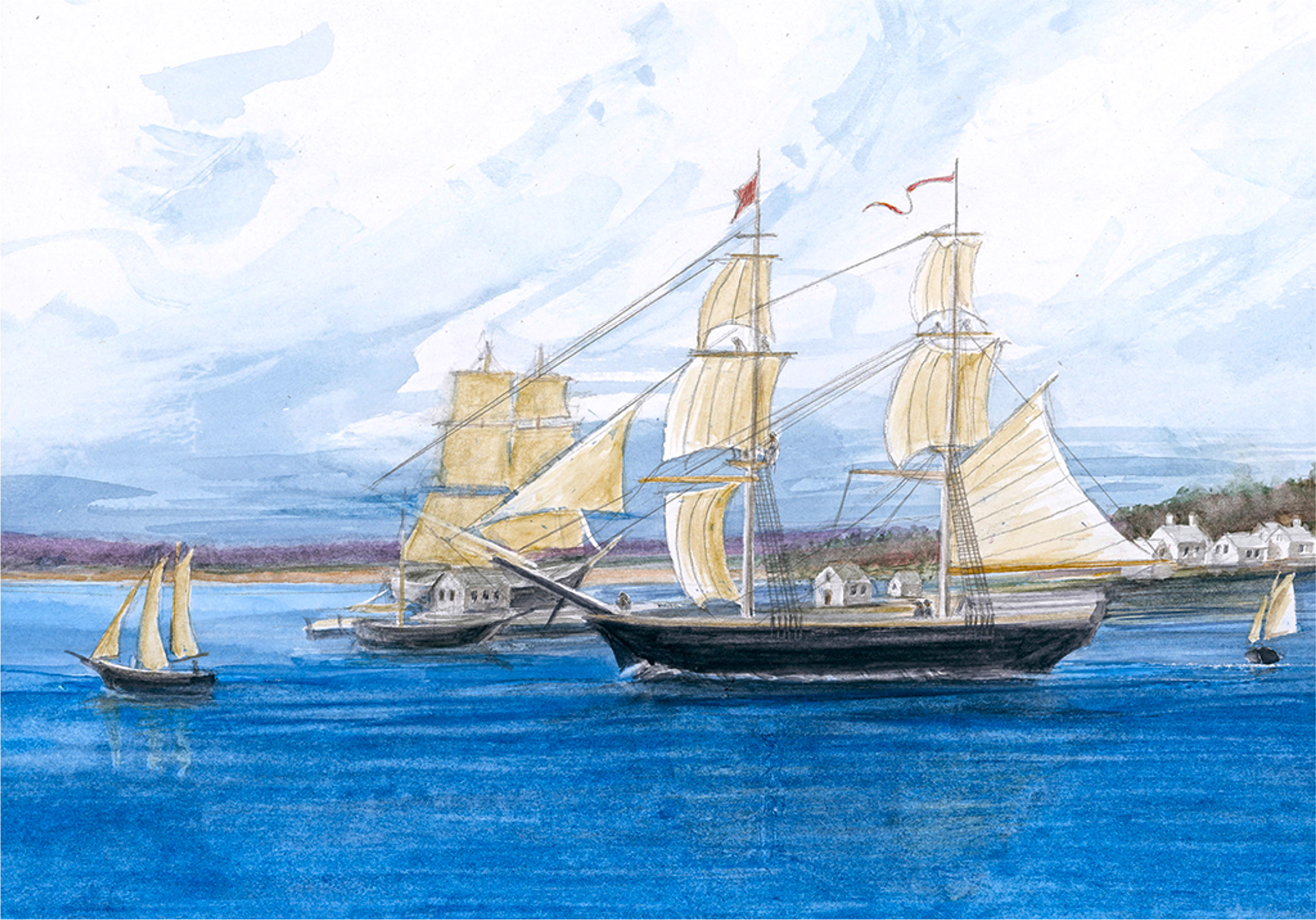
Traveller passing Westport Point on way to Sierra Leone in 1810
He first sailed to Sierra Leone, a colony of Britain, in 1810. He learned about the conditions of the people and the best ways to improve their lives.
From Sierra Leone Paul Cuffe sailed to England at the invitation of senior British officials and citizens who wanted to hear his ideas for supporting the African people.
He was warmly received in England and the leaders he met expressed strong support for his plans to assist the people of Sierra Leone.
They agreed with his proposals to open up international trade between Sierra Leone, England and America.
After leaving England he sailed back to Sierra Leone and loaded a cargo of goods from there to take back to America.
While he was sailing home, war broke out between the United States and England. This created serious problems for him and his mission.
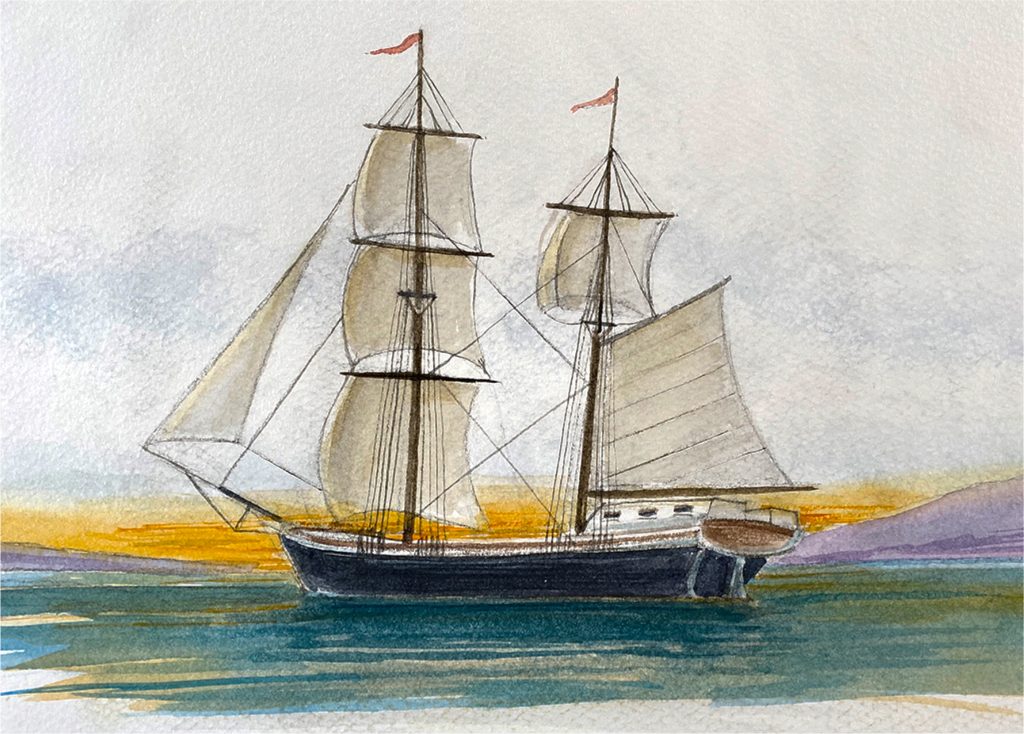
Traveller arrives in Sierra Leone
When he returned to Westport the local customs officials seized his ship and cargo because he was bringing goods from what was now an enemy colony.
In response, Paul Cuffe traveled by stagecoach to Washington to seek recovery of his ship and cargo.
With help from Quaker friends in Philadelphia, he was able to meet with President James Madison at the White House and obtain an order from the President for the release of his ship and cargo.
He was probably the first person of color to be received at the White House by an American President.
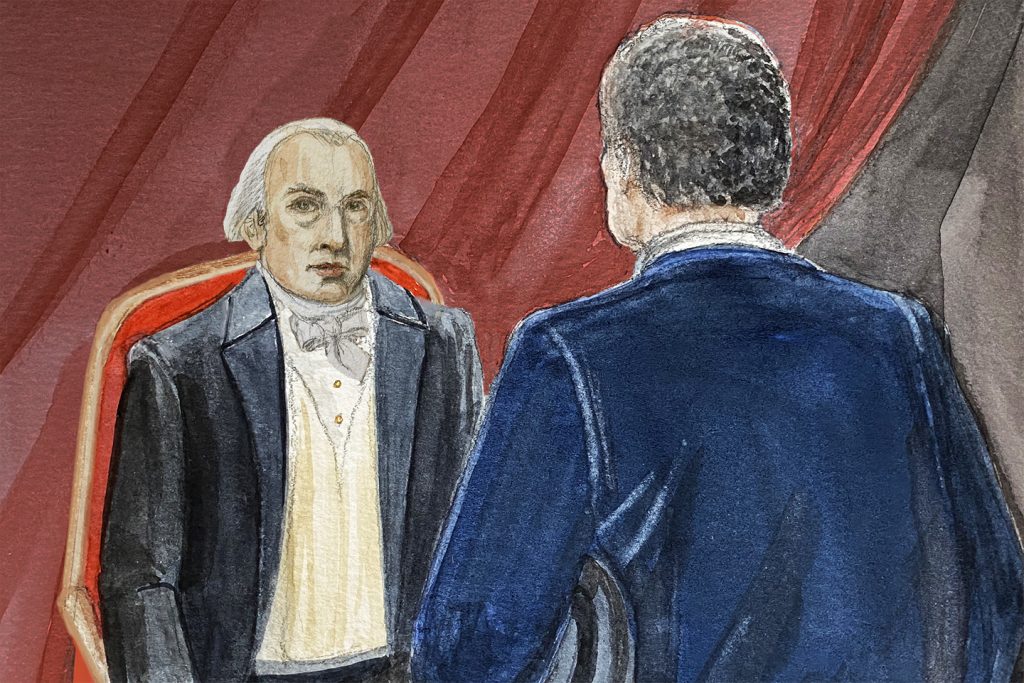
Paul meets with President James Madison at the White House
He sailed again to Sierra Leone in 1815 transporting ten families of color who were not slaves and who had useful skills and trades.
He also took machines to set up a sawmill and a mill for grinding grain into flour.
He returned to Westport in the fall of 1816 and hoped to be able to return to Sierra Leone the following year with more free blacks committed to assisting the people of Africa.
Unfortunately, those plans were never to be realized.
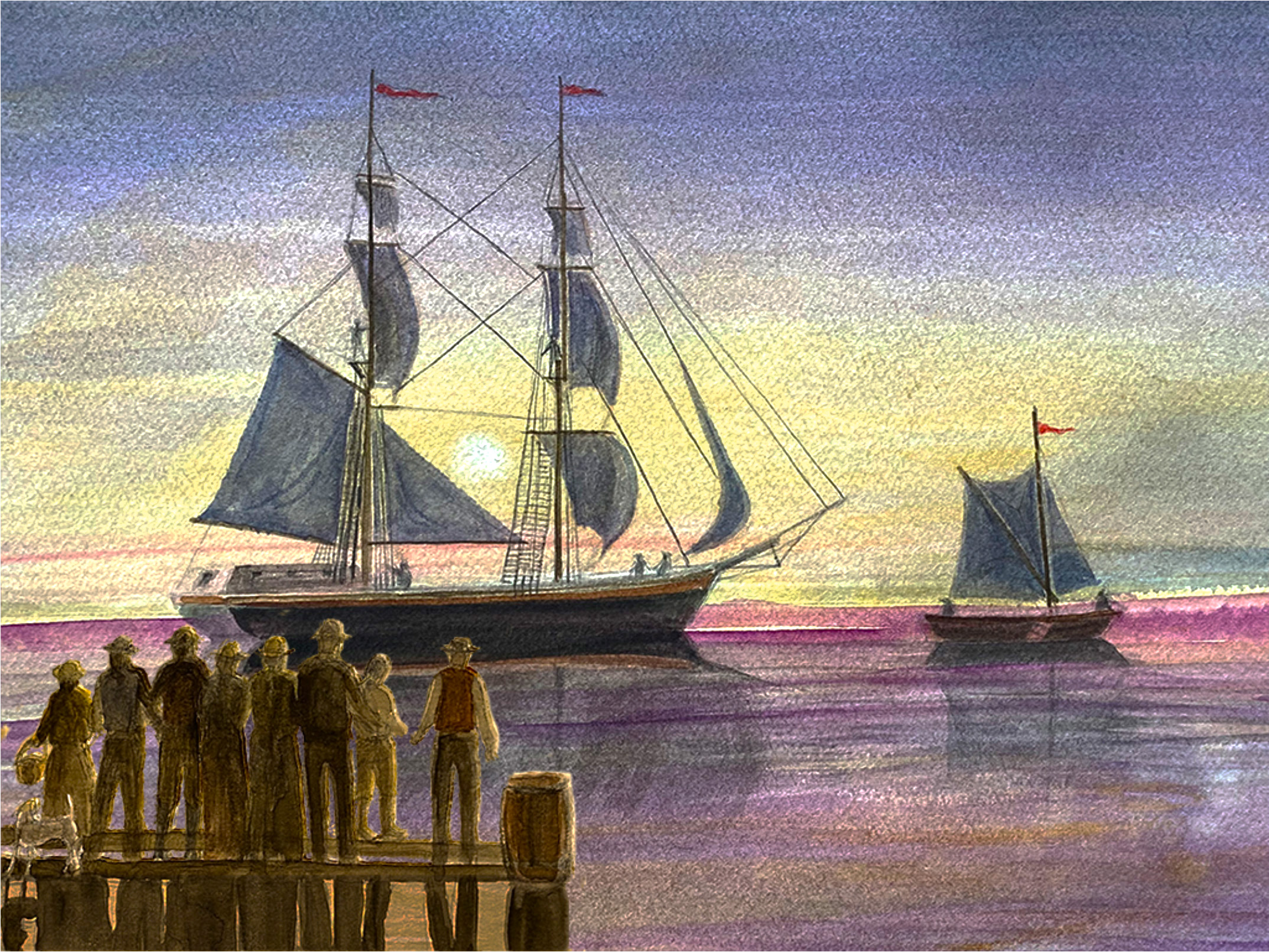
Paul Cuffe and Traveller passing Westport Point on 2nd trip to Sierra Leone, 1815
Shortly after his return from Sierra Leone in 1816, Paul Cuffe became seriously ill. Local doctors, including Dr. James Handy who owned the Handy House near Hix Bridge, tried to cure him, but without success.
Paul Cuffe died on September 7, 1817 and was buried the following day in the graveyard behind the Westport Friends Meeting House.
Many people came to his funeral ceremony including his lifelong friend, William Rotch Jr. who delivered a speech celebrating the life of Paul Cuffe. People around the world wrote about him at that time.
Gravestones behind the Westport Friends Meeting House commemorate the last resting place of Paul Cuffe and his wife, Alice Cuffe.

Gravestones of Paul and Alice Cuffe in the cemetery behind the Friends Meeting House
Why do we celebrate Paul Cuffe’s birthday and remember who he was and what he did?
Being proud of his mixed-race heritage and humble beginnings:
- He taught himself to read, write and become a successful speaker.
- He became a very successful sea captain, shipbuilder and businessman.
- He built the first school in Westport open to all children regardless of color.
- He oversaw the building of the Friends Meeting House in Westport.
- He supported equal voting rights for persons of color.
- He sought to abolish slavery and the slave trade.
- He sought to improve the lives of the people of Africa.
- He helped his friends and neighbors who were facing hard times.
- He was widely respected and admired by all who knew him.
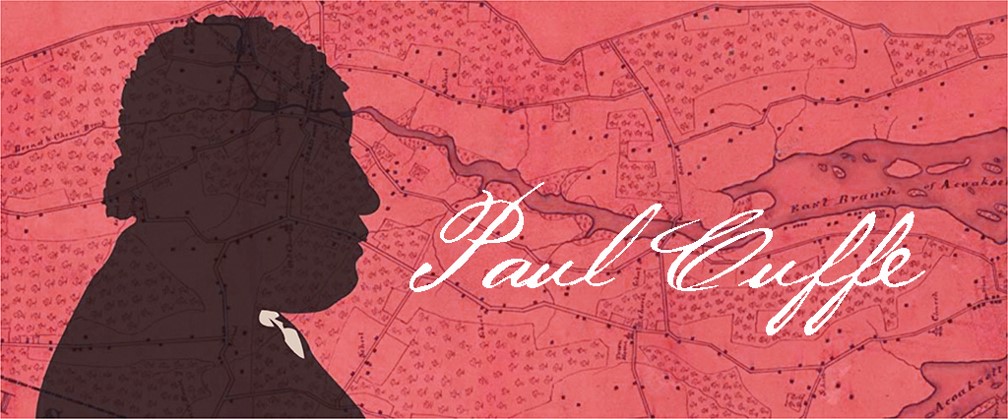 Text written by David Cole and artwork copyright Ray Shaw
Text written by David Cole and artwork copyright Ray Shaw